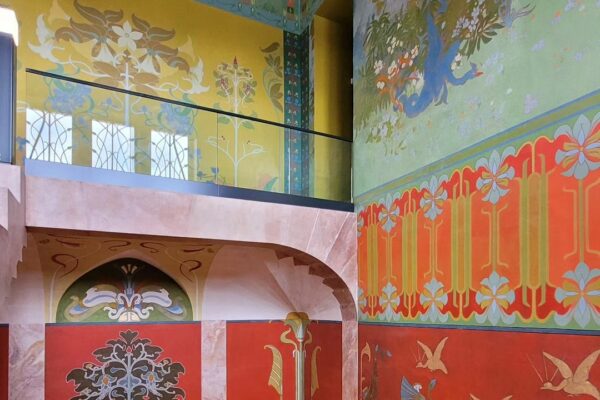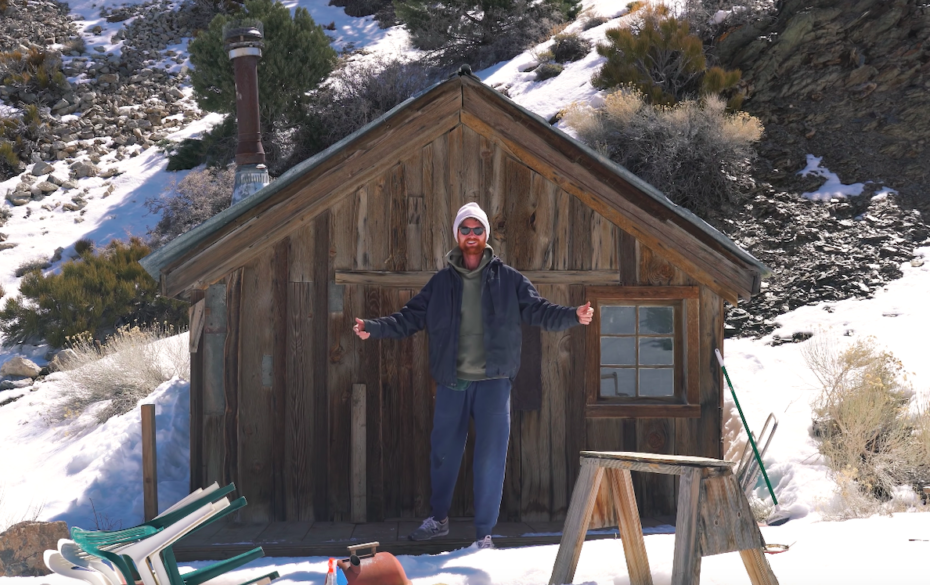
In 2018, Brent Underwood and his pal, Jon Bier, spent their life savings on the purchase of a California ghost town, “Cerro Gordo” – and life has never been the same since. Underwood’s virtual tour of the town and its stories – equal parts Clint Eastwood Western, Twin Peaks, and The Shining – brought its sweeping, cinematic atmosphere to our homes. Underwood was born with a thirst for history and its treasures. Couple that with his love of preservation – and a lightness of spirit to drink whatever whisky is for the finding – and you’ve got one hell of a Zoom happy hour. We asked: is there more silver in the mountain? Any ghosts?
If you missed this Live Q&A, you can re-watch all the wonderful moments in the full Video Event here in the Keyholder Vault. In the meantime we’ve transcribed some of the best questions below to whet your appetite…
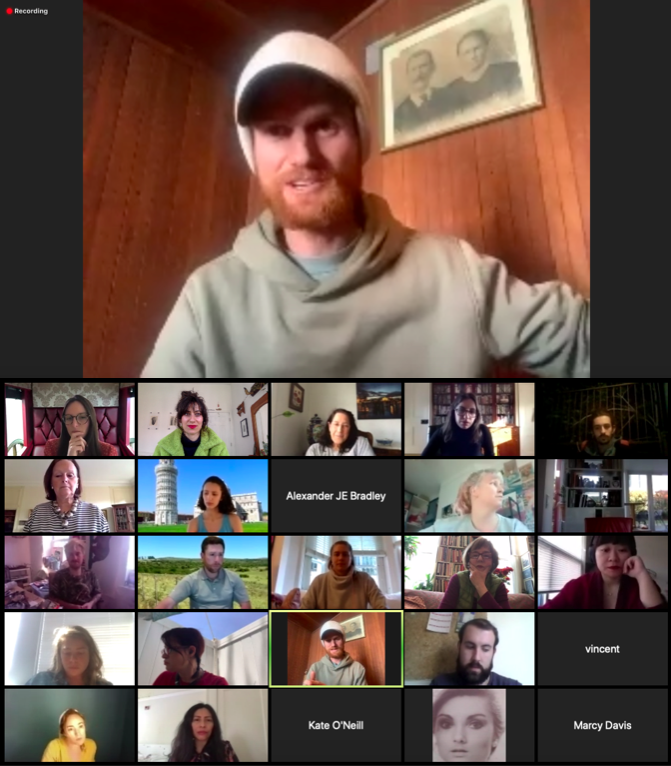
Messy Nessy Chic: Hi, Brent! Glad you made it.
Brent Underwood: Yeah, thank you! Excited to dive in. I had a little difficulty connecting.
MNC: Last time we heard, you were snowed in and quarantining in your ghost town. What’s your current situation? Is there electricity? Water?
BU: The town has been wired for electricity since the mid-1900s, but there’s no running water. It used to get its water from the nearby Owens Lake, as part of the Los Angeles aqueduct program, until it dried up in the 1920s. Since then there have been different solutions, like trucking it up – the owners maybe 20 years ago pumped water out of the mine 900 feet below ground. I’ve been melting some of the snow, which is helping.
MNC: Are you the only person there?
BU: Correct. I can wander around while socially isolating! It’s a pretty interesting experience being up here, given what’s going on in the world. I read a lot of the books left behind here on the history of the town, and learned that a lot of miners back in the day died of Spanish Influenza. Every morning I walk past that graveyard. To be here during a different pandemic is a really interesting experience, to say the least.
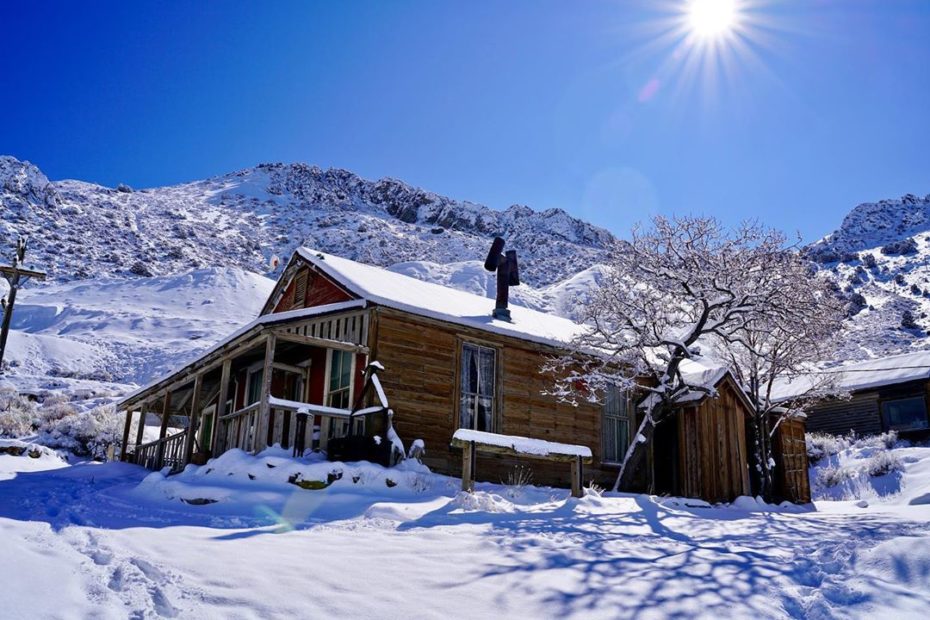
MNC Audience Member: Why and when did Cerro Gordo become a ghost town?
BU: So the silver ran out around 1910. Then, in 1920, they found zinc and mined that for about 10 years. By 1930 there were no real mineral deposits left and the water had run out because they drained the lake. Everybody packed up shop, and left. For almost 100 years it sat vacant. There’s always been a caretaker, though.
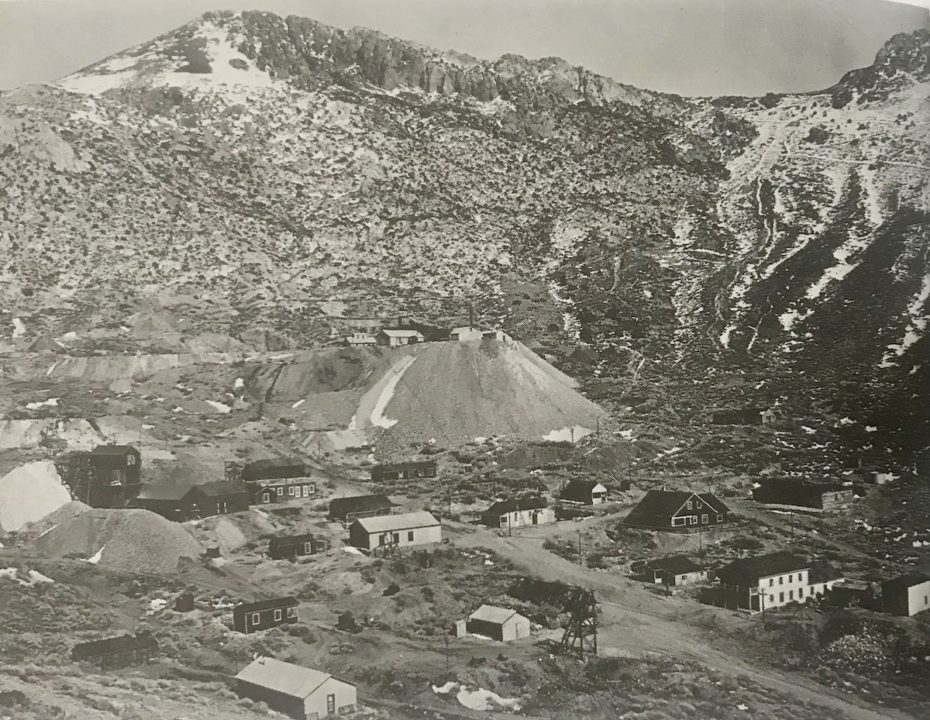
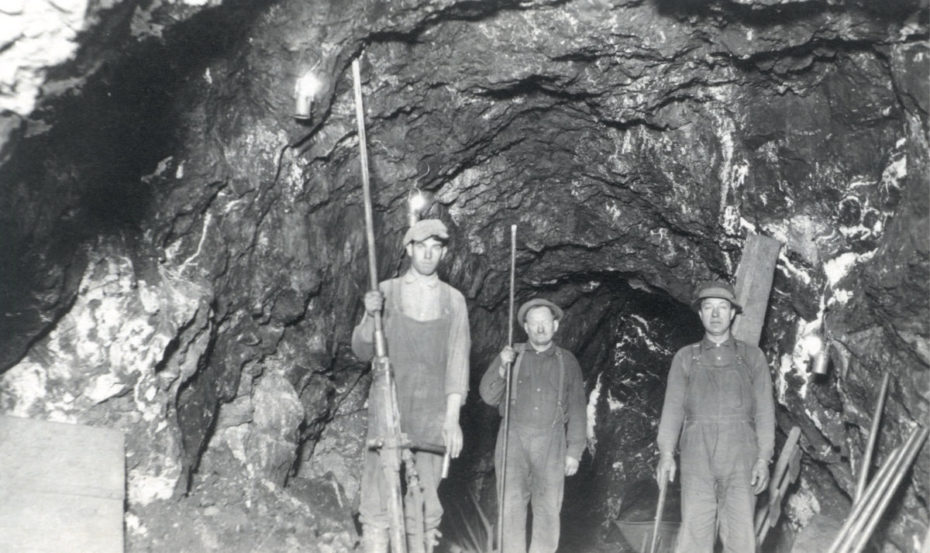
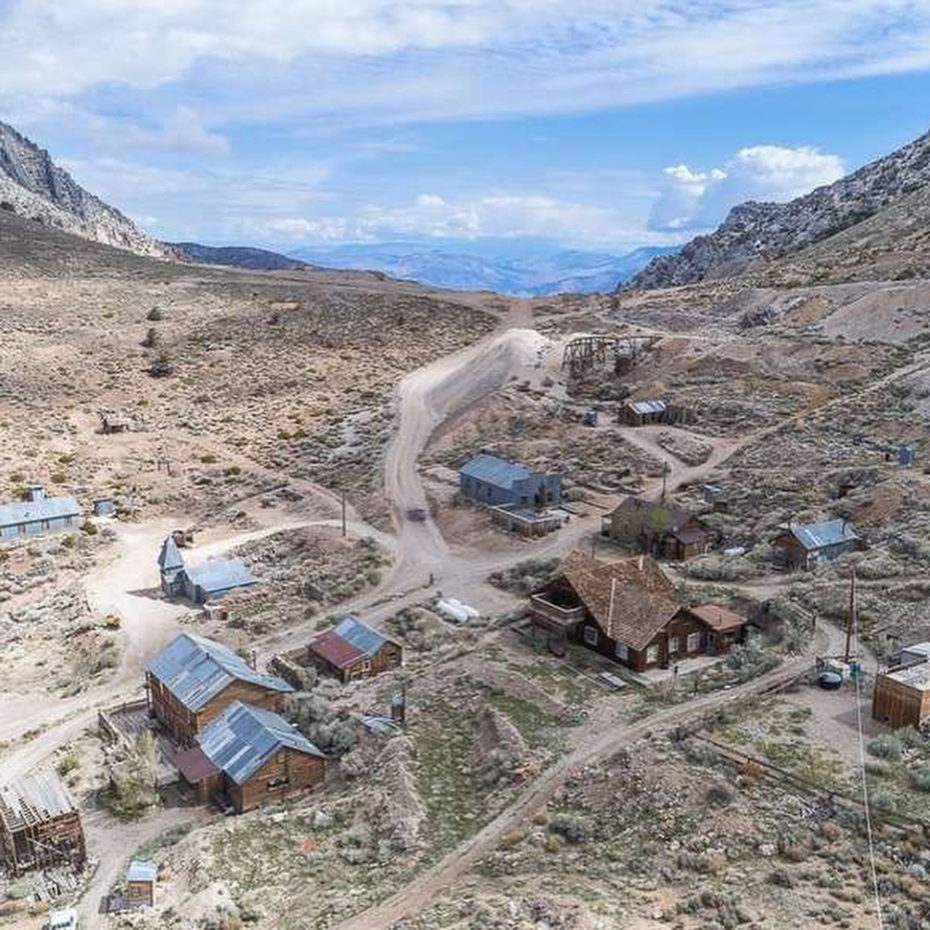
MNC: Is that why you’re there now?
BU: Yeah. Our actual caretaker, Robert, went to go join his wife during all of this. His story is great; he came up here 20 years ago because he believes there’s more silver in the mountain, as he’s a miner by trade. So he’s always in search for the lost silver vein, I suppose…
MNC: Now, truthfully – is there more silver in that mountain?
BU: We’ve had imaging and core samples done, but they can’t find anything that would make the start of large scale mining seem plausible. Our goal is just to preserve the integrity of the site history. Robert still looks for tell-tale signs of silver after a rain, though. He also knows how to take the “slag,” which is the old leftover material from 100 years ago, and further refine it to extract silver from it. So he’ll make small batches – maybe a couple ounces – as these cool little silver mementos. You can find them on our website.
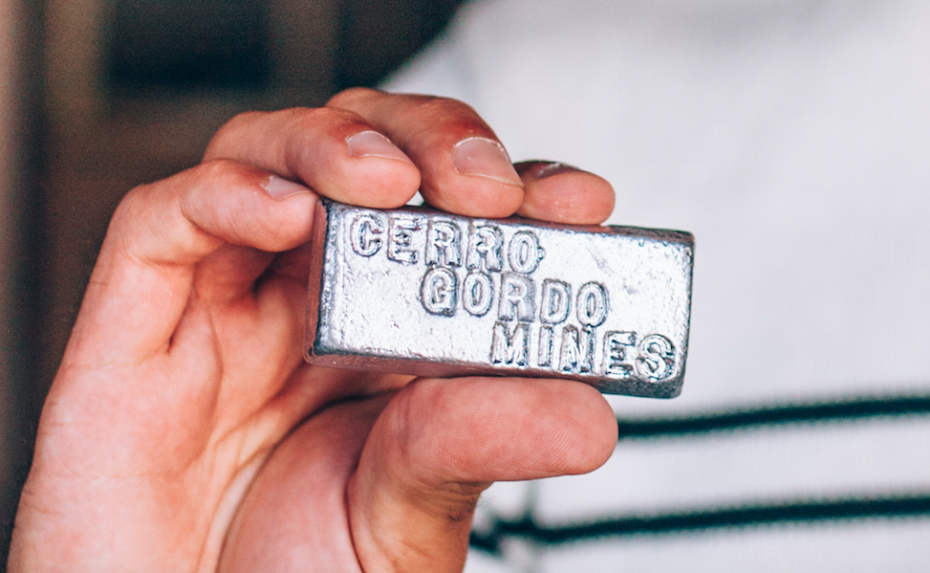
MNC Audience Member: How big is Cerro Gordo? Is it on Google Earth?
BU: It is. There are some 20 buildings that all need a variety of different work. One stand-out is the “Belshaw House,” made by this guy Mortimer Belshaw in 1868. He was kind of the Jeff Bezos of Cerro Gordo [laughs]. He owned the road a little bit of everything.
MNC Audience Member: How did you first come across Cerro Gordo?
BU: So I have a bed and breakfast in Austin, Texas that’s in a very old building, by American standards. I just fell in love with old buildings, and the combination of history and hospitality has been so rewarding. My friend told me about Cerro Gordo kind of as a joke, by sending me this article at 2:00 am [laughs] about a “ghost town for sale,” but I became obsessed! It just captures your imagination. I was hooked from the first visit, when that road opens up and you see it. I love it.
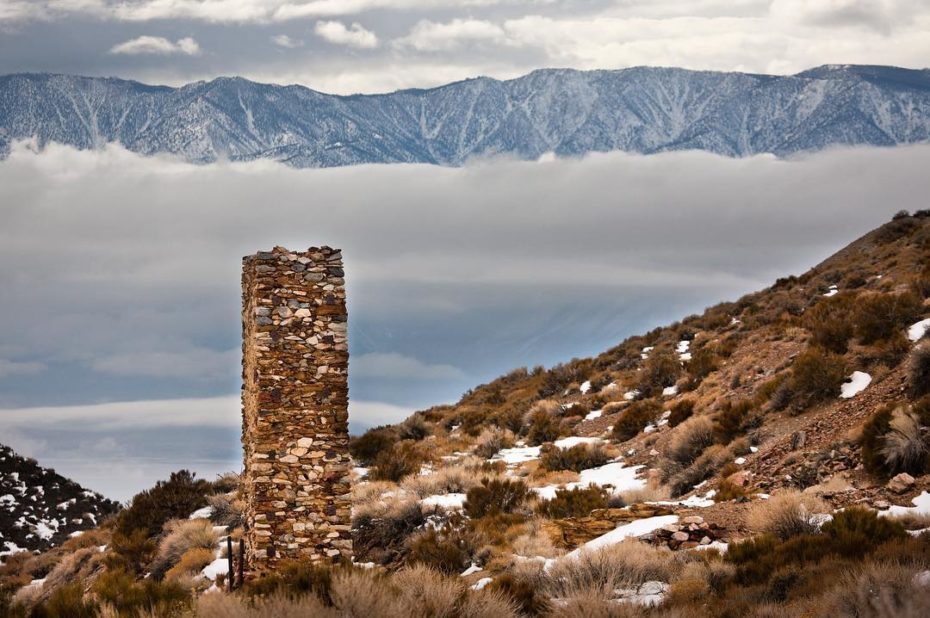
MNC: Was there a bidding war?
BU: Yeah. It got really popular. One of the competing bidders, for example, wanted to make a marijuana themed amusement park [laughs]. There were bids higher than ours, but our vision to make it into an overnight accommodation experience, and preserve it, was in line with what the children of the former owners believed in.
The natural beauty is really something. If I look out one way, I can see Mount Whitney, which is the tallest peak in the continental US. If I look over the backside of the property, there’s Death Valley, which is the lowest. Combine that with the history of the town, it’s just an adventure. It’s something I never experienced growing up mostly in larger cities. My grandfather always watched the Western show, Gunsmoke – there’s just that allure of the American West, right? Of cowboys, and mining towns, and people chasing gold and silver? It’s always on my mind, the stories of those 5,000 people who packed up their lives to come to Cerro Gordo.
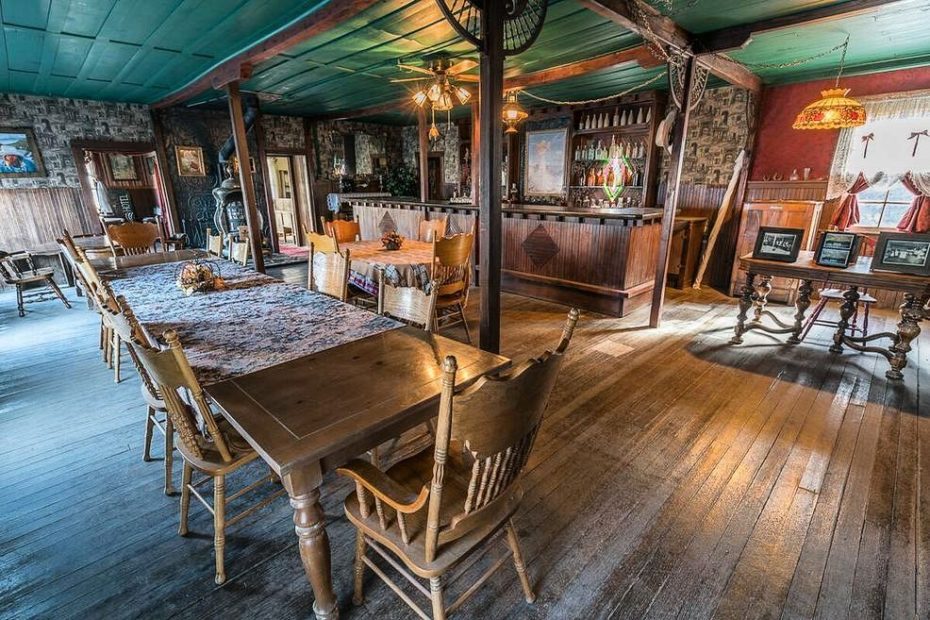
MNC Audience Member: What building are you in right now?
BU: So right now I’m sitting in the old poker room in the saloon. There’s a famous story of a card game gone awry at Cerro Gordo, wherein a disagreement over a political election led to an uproar in this room. Can you see the bullet hole on the wall there [shift camera]? If you look there [points to the floor] there’s a blood stain…
MNC: As in, human blood?
BU: Yeah. It’s from a pretty well-documented murder, committed by a man named William Crapo in 1892 where I’m sitting. The victim died directly behind me. Let’s see, maybe I can switch around the camera…
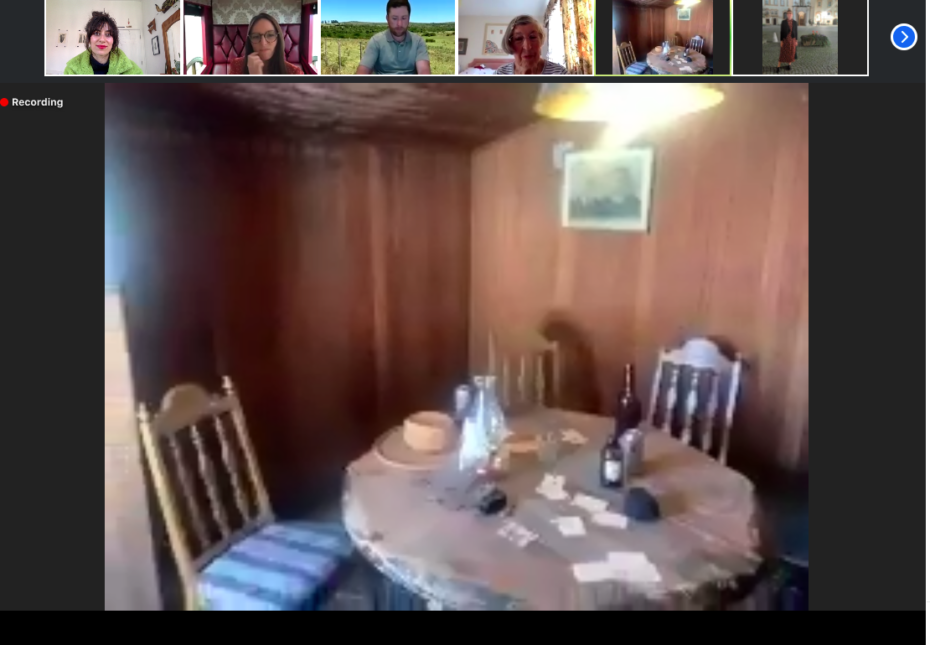
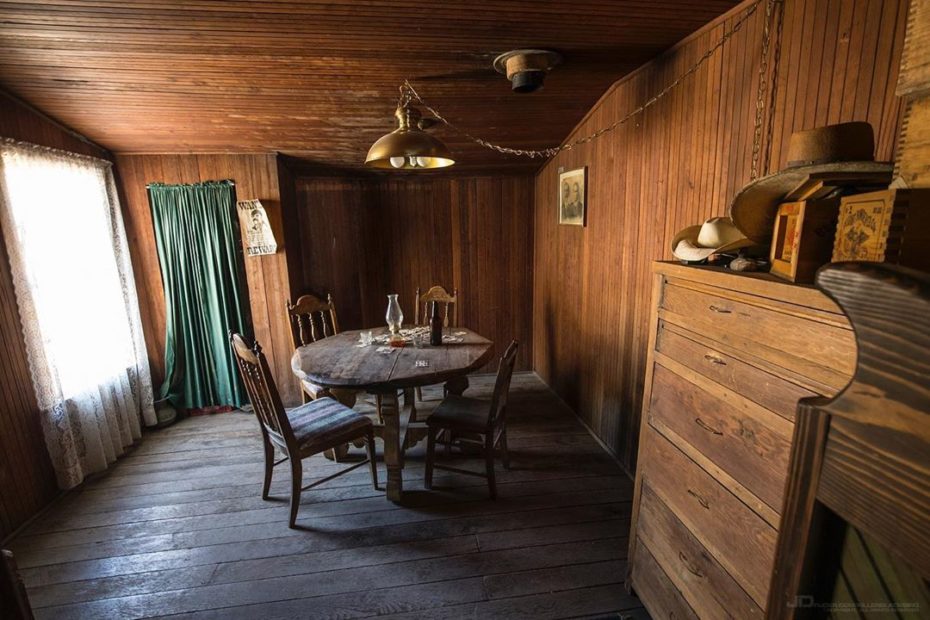
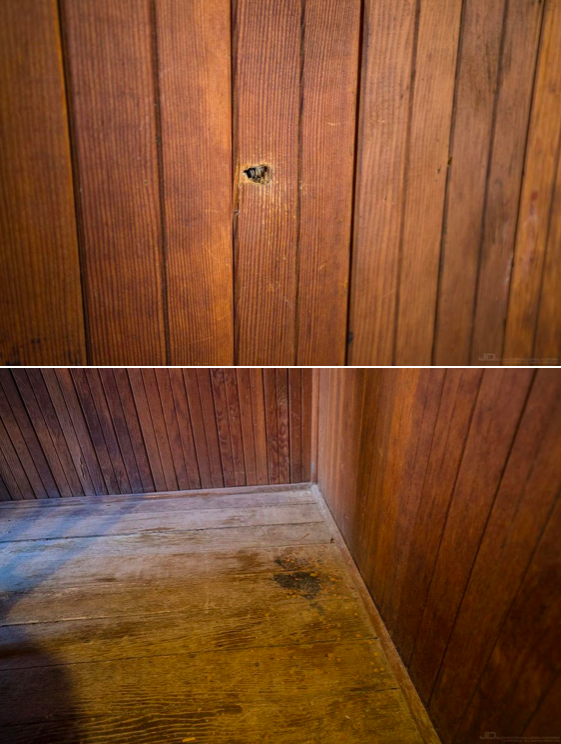
MNC Audience Member: Do you have any ghost stories?
BU: Yeah [smiles]. So, going into Cerro Gordo, one knows there’s going to be ghost stories. There’s a particularly famous ghost – I think his name is Anton – that haunts this saloon. He worked at a wood cutting farm I think. In this card room, a lot of independent guests have said their phones suddenly stop working or their cameras. Obviously I’m disproving that a little bit by having a Zoom call here [laughs].
MNC: Do you believe in ghosts?
BU: Initially, I didn’t. Then I had this eerie experience, after we bought it. I had some friends visiting and I was letting them stay in the house I typically stay in, and I was walking down at sunset to this peak that requires me to walk past this bunkhouse. It has eight rooms, four on either side. It’s been there since 1890, I think. I noticed the light in the kitchen was on. Then someone looked out the window, closed it, and the light flickered. I didn’t think too much of it because we’d had contractors doing work, and staying in the bunkhouse.
But the next morning, I asked Robert how much longer the contractors would be staying in the bunkhouse – remember, I hadn’t been in the town for a few weeks – and he kind of looked at me confused, and said, “Well they left two weeks ago.”
I tried to rationalize it. You know, Oh, it was something with the electricity…
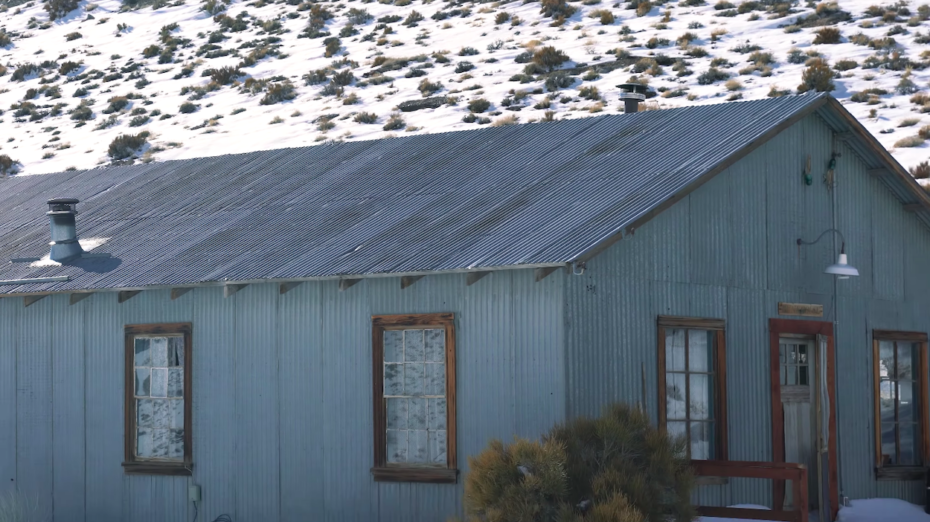
MNC: Did you investigate any further?
BU: I turned off the bunkhouse lights, closed the blinds, padlocked it with a lock for which only I have the key. That night I saw the light was on again in the kitchen…
It’s a difficult feeling to describe, being in the bunkhouse. If I walk in its long hallway with the rooms on either side, the further I go back the more I get the feeling that I shouldn’t be there. That’s the only way to describe it. Just this sense of don’t be in this building. So I don’t go in at night, and I can’t go in alone. No way.
MNC: So has it made you a believer?
BU: Let’s say a skeptic. I’m now very much closer to being on-board with the ghosts, and just trying to find a way to co-exist. I’ve also had my wallet seemingly grow legs and move from one building to another that I wasn’t all inside. I had a book fall off a shelf in the middle of the night, with no draft. I think it’s mostly mischief stuff the ghosts have been doing. Nothing terrifying, knock on wood!
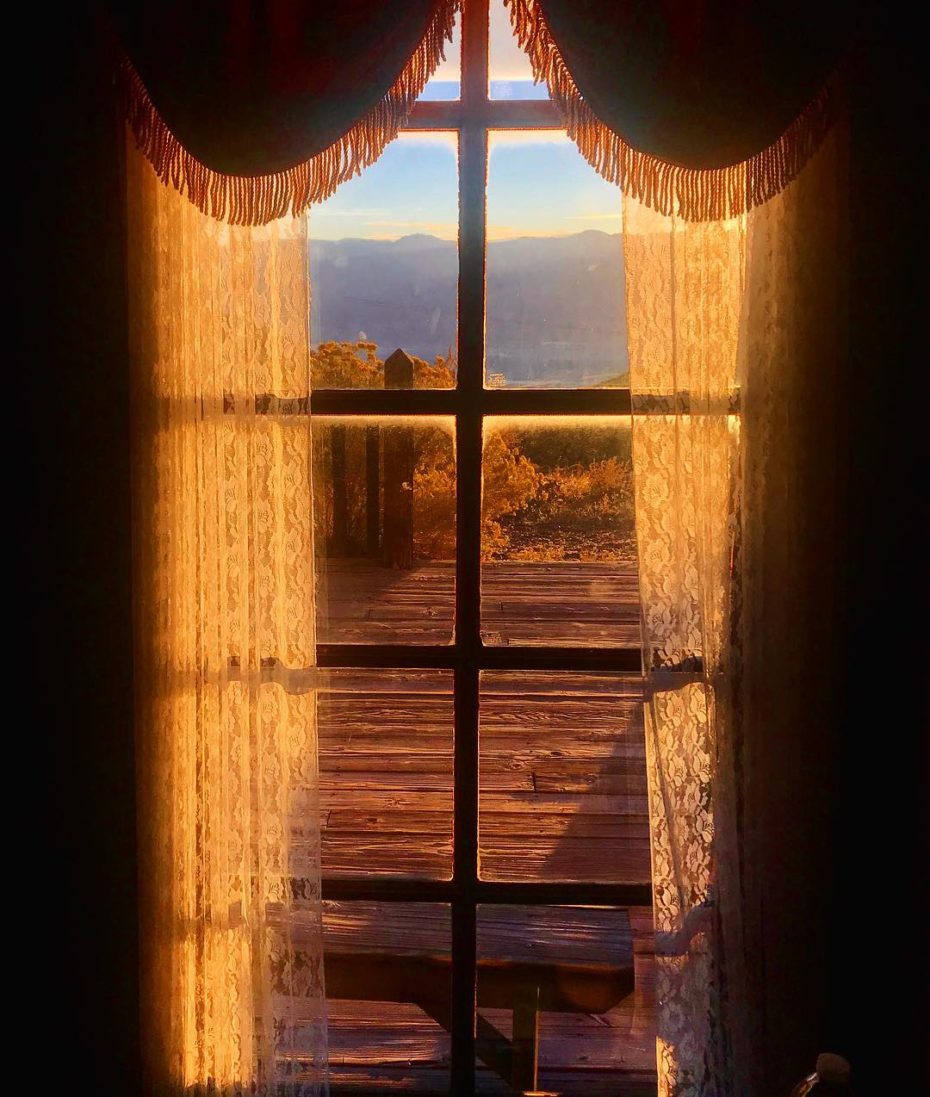
MNC: Who is your closest neighbor?
BU: So there’s a seven mile, single dirt road to get to the top of our property. You go from 2,000 feet in elevation to over 8,000. At the bottom of that mountain is a town called Keeler, which used to be a port city on Owens Lake. There’s 20 residents down there now.
The closest real city would be Lone Pine, which is 30 miles away with a population of maybe 800 people. They have a grocery store, gas station, things like that. But it’s a long 30 miles away. You can’t go fast down the road out, it’s so steep.
MNC Audience Member: Are you using any reclaimed materials for the building repairs?
BU: Yes, we’re almost only using reclaimed wood, unless structurally it’s not possible. As I mentioned, there used to be a couple hundred buildings. The former caretakers and owners did a great job of compiling that wood into the church here. We have fun re-adapting things.
A kind of crazy story is that some of the original 1870s flooring in this building’s kitchen was sold to a pharmacy in Lone Pine to pay some bills, which I’m trying to buy back because the pharmacy is now going out of business.
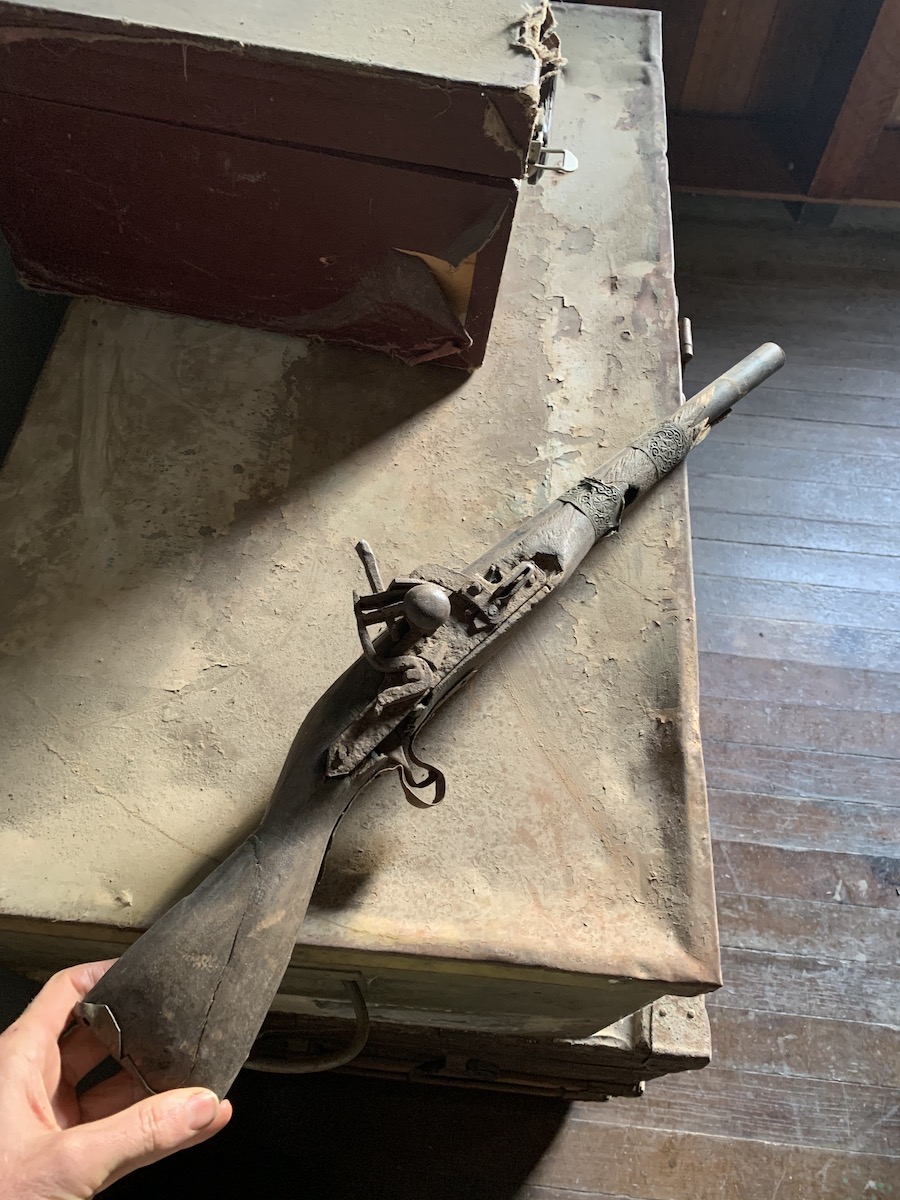
MNC: What’re some of the artefacts you’ve found?
BU: Some stuff has been untouched for ages. Others are Coors Light cans from the 1990s [laughs]. I found a little Sunday school hymn book from 1841, with a really nice note to the student. We found original silver ingot – it’s huge, probably 40 pounds – and just yesterday, I found this crazy musket:
I found a standing suitcase yesterday with a soldier’s old uniform and a dining menu from a hotel with a 1931 note to a lover saying, “This was an amazing meal, wish you were here…” One of my personal favorite finds was a miner’s briefcase, which I found wrapped in a blanket behind the counter of the general store. It was filled with all his highs and lows – there were uncashed checks from the 1920s. Love letters. Lawsuits. A man’s whole life in a briefcase.
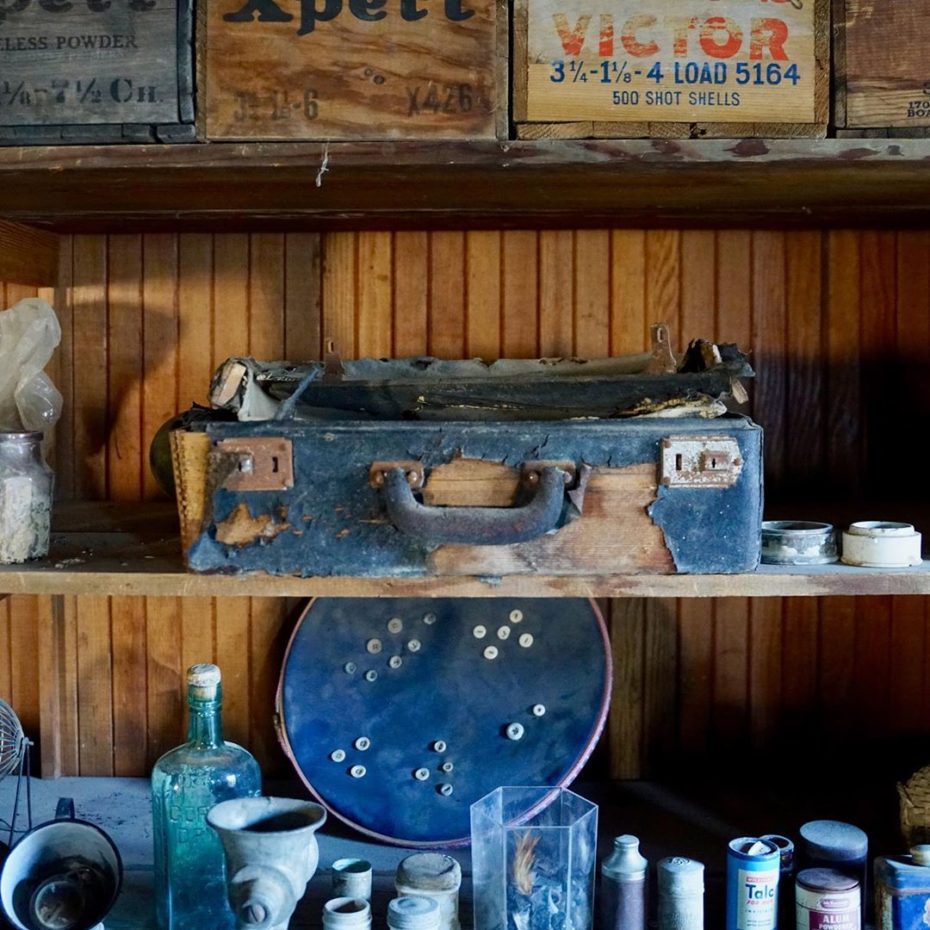
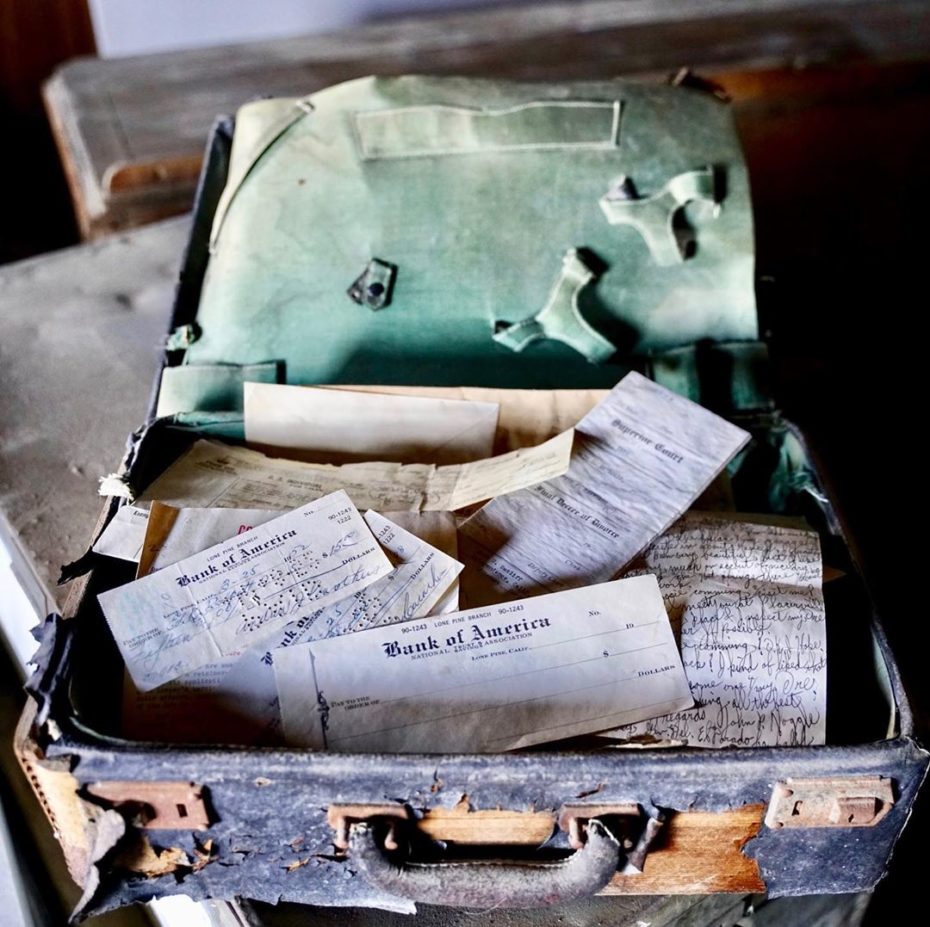
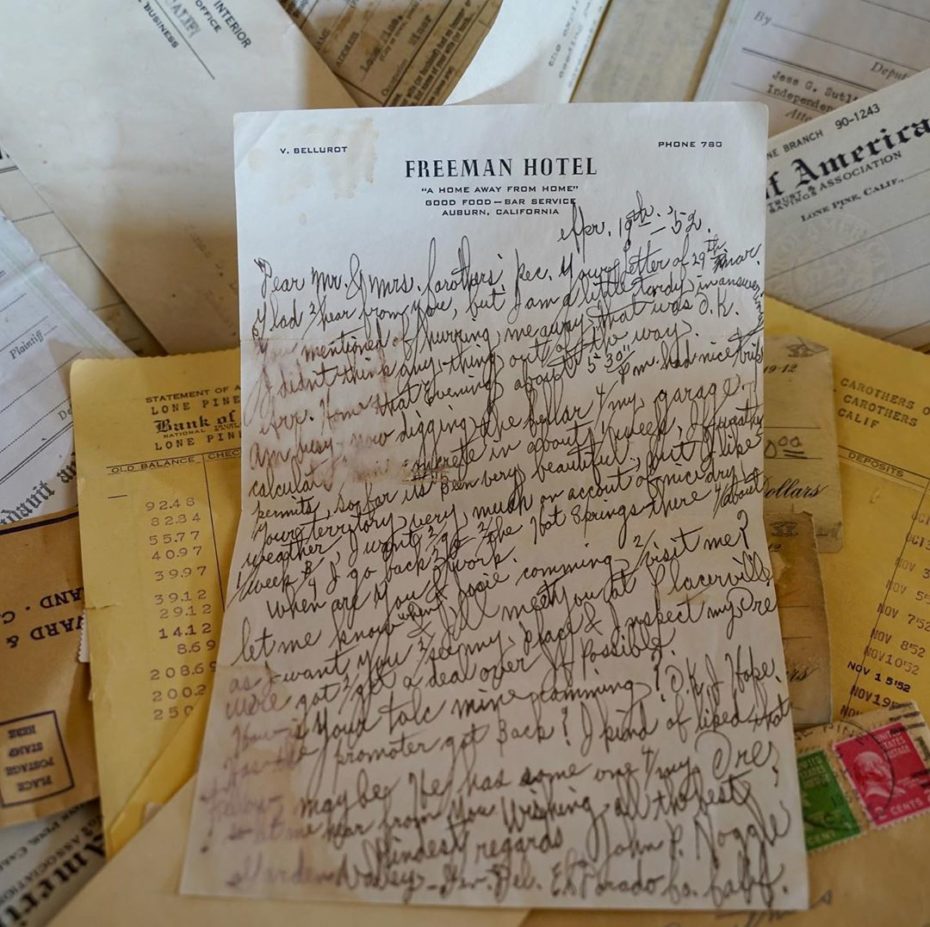
MNC Audience Member: Are there any notable graves in the cemetery?
BU: There’s also about 300 miners. Jody, one of the former owners, is buried on site. We call her, “The Goddess of Cerro Gordo.” And there’s Lola Travis, the town madame who ran all the brothels. She was a big personality it seems. There’s stories of people trying to negotiate or ague prices with her, and that she’d just pull out her gun – not one to mess with!
MNC: Wouldn’t be the Wild West without a brothel.
BU: She ran four different brothels, I think, and a couple saloons. There’s pictures of her all over Cerro Gordo, looking very content.
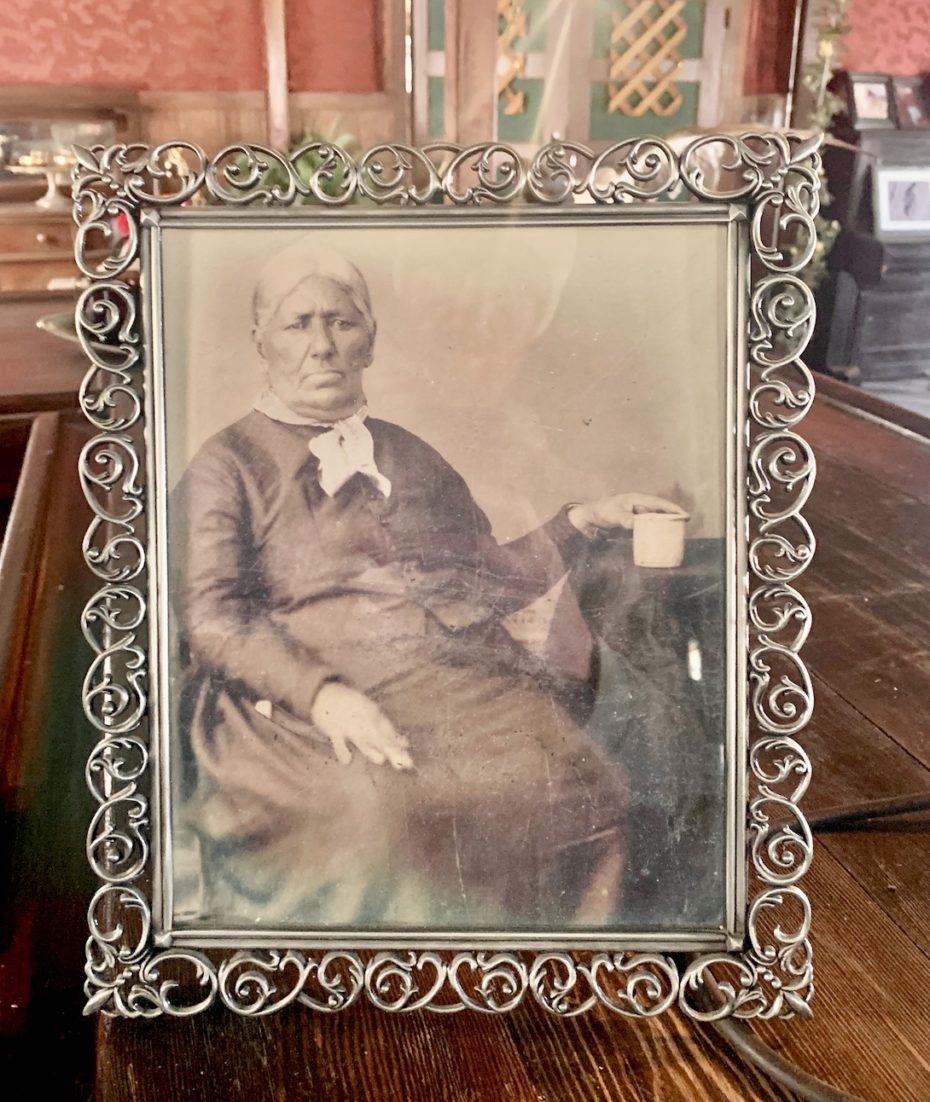
MNC: Are any brothels still standing?
BU: There’s one called “Lola’s House of Pleasure” at the far end of town.
MNC: Ok, we have a left-field geeky question. We noticed Jeff Goldblum stopped by your town last year. What was that like?
BU: He was a cool, charismatic guy, and came to film an episode of a TV show called, The World According to Jeff Goldblum about denim – and denim was very important in miners’ lives. These old Levi Strauss jeans are worth tens of thousands of dollars if you can find them on mining sites today! So Jeff, along with a jeans-explorer known as “Indiana Denim,” went on an expedition in Cerro Gordo. I’ll leave the cliff hanger there…
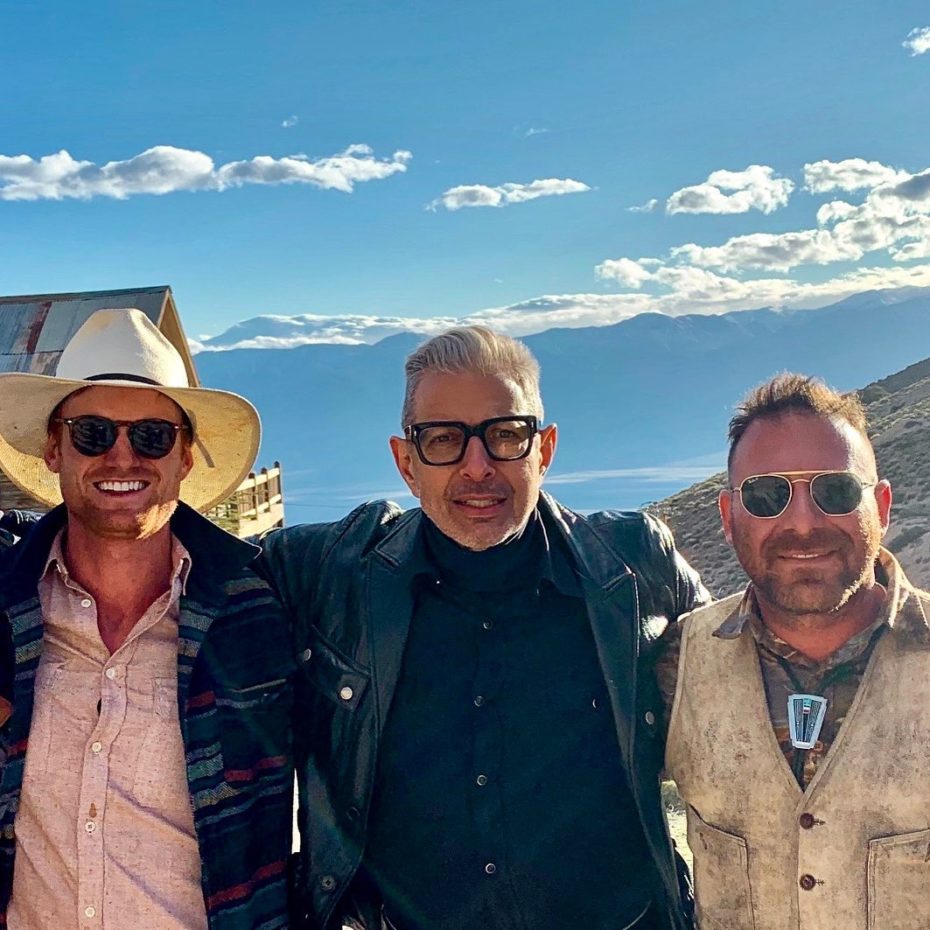
MNC: Do you go in the mines?
BU: I’ll peek in. It’s a little bit scary. My priority is to be safe, so I’d go with an expert.
MNC: Have you ever thought of turning Cerro Gordo into a micronation?
BU: Micronations are interesting. I went down that rabbit hole for a very long time [laughs]. I guess we could!
MNC: Do you consider yourself the Sherriff of Cerro Gordo?
BU: [Laughs] this is a big debate between my business partner and me. He’s a little more aggressive and stockier than I am, so he’s the Sheriff and I’m the Mayor. For now. Maybe we’ll settle it in a dual one day.
MNC: Lastly…are you hiring?
BU: There’s a lot of work to be done up here. Not at the moment – but stay in touch!
Oh, and one more thing: check out what Brent’s been up to recently in his vlog below, and learn more about the ghost town with some of his suggested reads, Cerro Gordo by Roger and Cecil Vargo, and From This Mountain: Cerro Gordo by Robert Likes.








